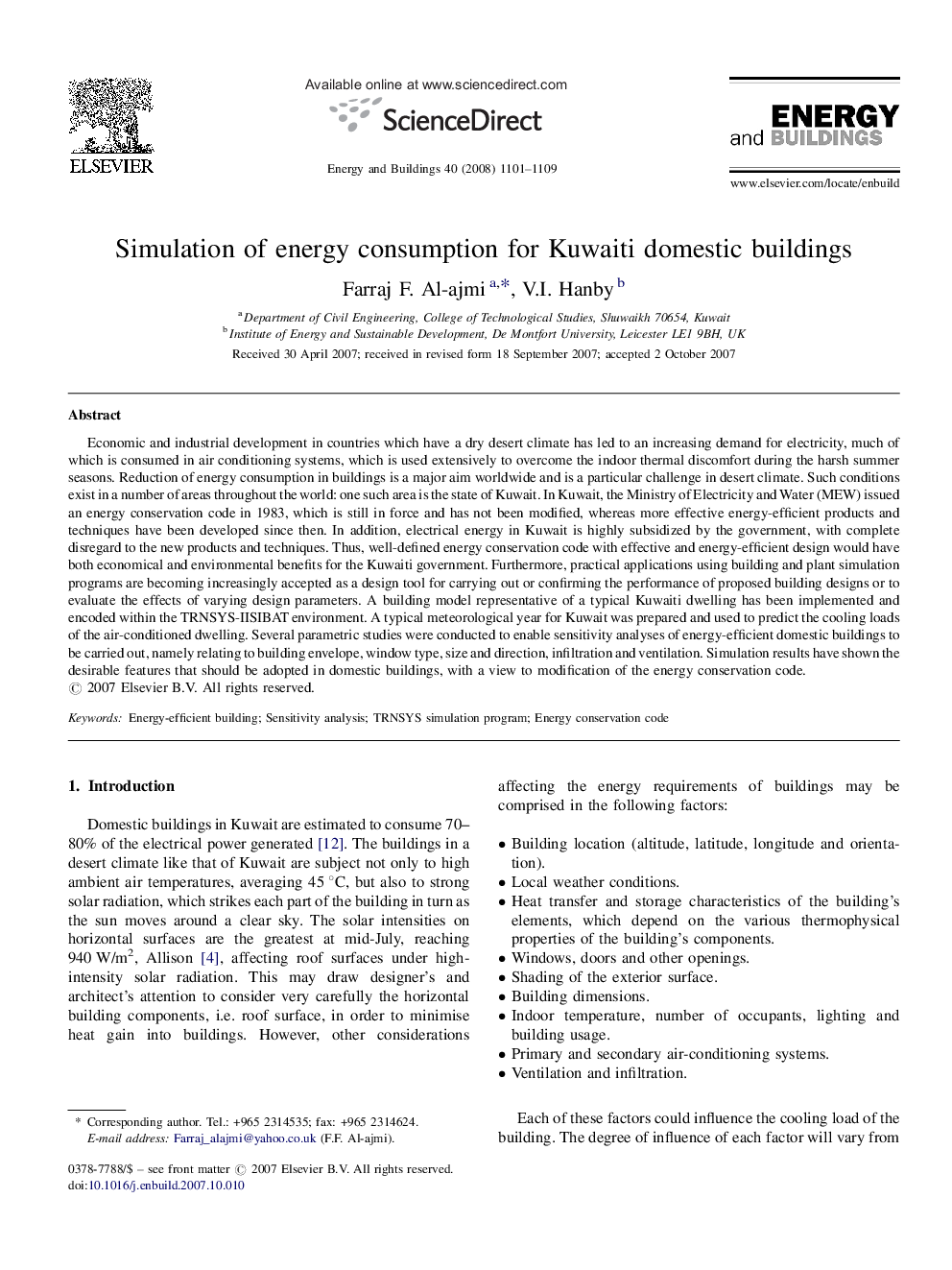| کد مقاله | کد نشریه | سال انتشار | مقاله انگلیسی | نسخه تمام متن |
|---|---|---|---|---|
| 265505 | 504165 | 2008 | 9 صفحه PDF | دانلود رایگان |

Economic and industrial development in countries which have a dry desert climate has led to an increasing demand for electricity, much of which is consumed in air conditioning systems, which is used extensively to overcome the indoor thermal discomfort during the harsh summer seasons. Reduction of energy consumption in buildings is a major aim worldwide and is a particular challenge in desert climate. Such conditions exist in a number of areas throughout the world: one such area is the state of Kuwait. In Kuwait, the Ministry of Electricity and Water (MEW) issued an energy conservation code in 1983, which is still in force and has not been modified, whereas more effective energy-efficient products and techniques have been developed since then. In addition, electrical energy in Kuwait is highly subsidized by the government, with complete disregard to the new products and techniques. Thus, well-defined energy conservation code with effective and energy-efficient design would have both economical and environmental benefits for the Kuwaiti government. Furthermore, practical applications using building and plant simulation programs are becoming increasingly accepted as a design tool for carrying out or confirming the performance of proposed building designs or to evaluate the effects of varying design parameters. A building model representative of a typical Kuwaiti dwelling has been implemented and encoded within the TRNSYS-IISIBAT environment. A typical meteorological year for Kuwait was prepared and used to predict the cooling loads of the air-conditioned dwelling. Several parametric studies were conducted to enable sensitivity analyses of energy-efficient domestic buildings to be carried out, namely relating to building envelope, window type, size and direction, infiltration and ventilation. Simulation results have shown the desirable features that should be adopted in domestic buildings, with a view to modification of the energy conservation code.
Journal: Energy and Buildings - Volume 40, Issue 6, 2008, Pages 1101–1109